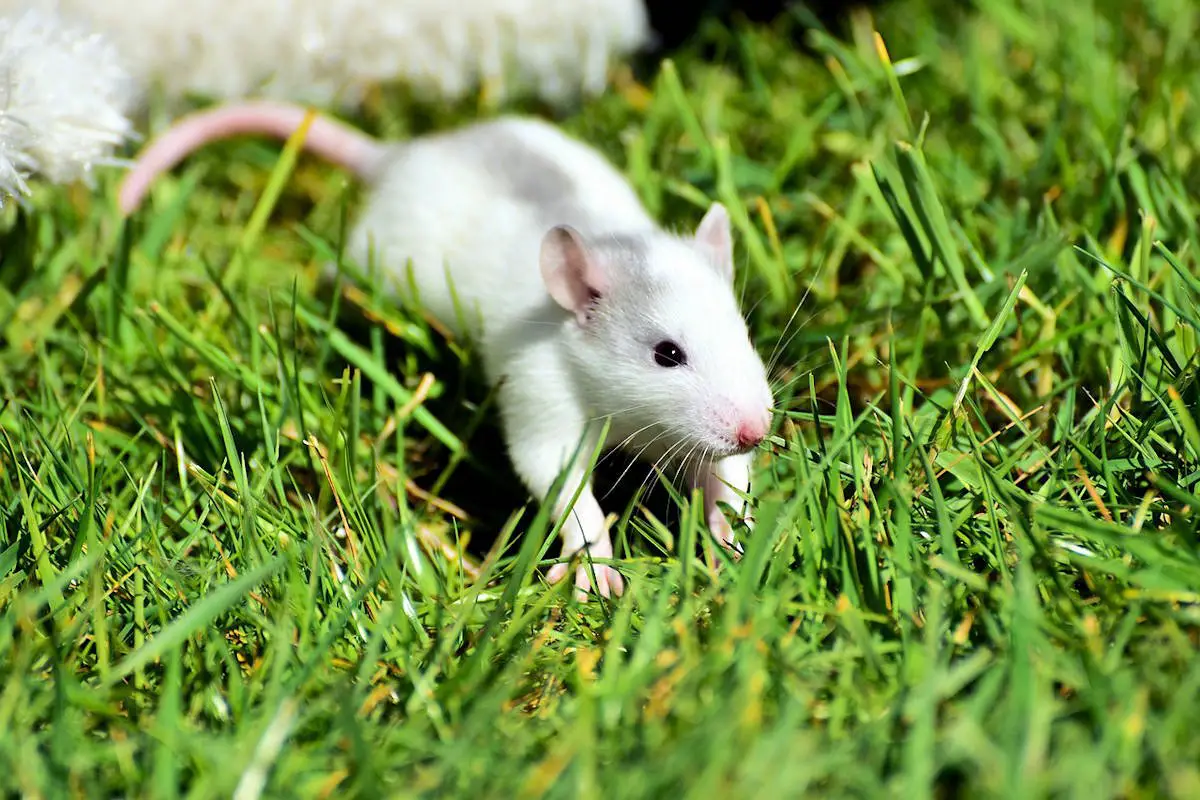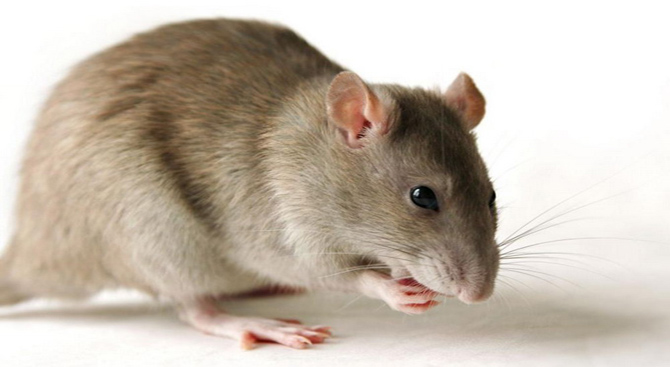When the phrase "rata mexicana" comes to mind, a person might, actually, picture a few different things. For many, it likely brings an image of a common creature that shares our environments, perhaps scurrying about in urban settings or making its home in more wild places. This initial thought, in a way, is often the most direct one, tied to what we generally know about these animals and their presence across many parts of the world, including, of course, Mexico.
This simple pairing of words, "rata" and "mexicana," seems straightforward enough at first glance, hinting at a specific kind of animal found in a particular geographic area. We often think of these creatures as being, you know, quite adaptable, able to thrive in many different surroundings. The idea of a "mexicana" version of this animal just makes sense, suggesting it's a type that has made Mexico its home, fitting into the local scenery and way of life there, more or less.
Yet, the word "rata" itself holds more than just one simple meaning, and when we add "mexicana" to it, we might be looking at something far more varied than just a single kind of animal. It's almost as if the word itself can shift its shape, pointing to surprising things like plants, tools, or even tales from long ago. So, exploring "rata mexicana" means taking a look at all these different possibilities, seeing how one little word can, perhaps, open up a whole world of ideas, some quite unexpected.
Table of Contents
- What Comes to Mind with "Rata Mexicana"?
- The Rodent "Rata" in Mexico - Characteristics and Habitat
- Is "Rata Mexicana" a Fruit? - Exploring Tropical Connections
- The Yellow Mangosteen and Other "Rata" Fruits
- Could "Rata Mexicana" Be a Tree? - Botanical Surprises
- New Zealand's "Rata" Trees and Distant Relatives
- Beyond Nature - What Else is "Rata Mexicana"?
- "Ratatype" and Ancient Legends - Unexpected "Rata" Meanings
What Comes to Mind with "Rata Mexicana"?
When someone mentions "rata mexicana," the first thought for many people, quite naturally, goes to a type of small, furry animal. These creatures are, basically, part of a large group of animals known for their quick movements and their ability to live in many different places. They are often seen in cities, towns, and even in the countryside, making their homes wherever they can find food and shelter. This common understanding of the word "rata" is, in some respects, the most widespread, and it's easy to see why it would be the first thing to pop into our heads when we hear the phrase. They are, after all, a familiar sight in many parts of the world, including the varied landscapes of Mexico.
These animals, which are, you know, often called "rats" in common speech, belong to a scientific family known as Muridae. They are typically described as being of a middle size, not too big and not too tiny, making them quite distinct from their smaller cousins, the mice. Their bodies are usually sleek, built for moving through tight spots and finding hidden pathways. They possess a set of front paws that are, actually, quite short, with four digits, or fingers, on each. This design allows them to hold things, to climb, and to generally get around in their environment with a fair amount of skill. Their tails are usually long and hairless, which, apparently, helps them keep their balance as they move about.
Their presence in Mexico is, in a way, just like their presence in many other places; they are part of the local animal life. They might be found in homes, in fields, or in sewers, always looking for resources to sustain themselves. People have, naturally, developed various ways of dealing with these animals, whether it's through efforts to control their numbers or simply by trying to understand their behavior. The term "rata mexicana" could, therefore, simply refer to any of the types of these animals that live within Mexico's borders, adapting to the unique conditions of that country. It's a straightforward interpretation that makes sense given how common these animals are globally.
The perception of these creatures can, in fact, vary quite a bit from person to person. Some people might view them as pests, causing problems or carrying diseases, while others might see them as simply another part of the natural world, doing what they need to do to survive. Their ability to live alongside humans, often unnoticed, is, perhaps, one of their most remarkable traits. They are, after all, quite good at staying out of sight when they want to. This adaptability means they have, more or less, become a constant presence in many human settlements, a fact that contributes to their widespread recognition and the immediate association with the word "rata."
The Rodent "Rata" in Mexico - Characteristics and Habitat
When we think about the rodent "rata" specifically in the context of Mexico, we are, generally speaking, talking about various kinds of these animals that have made the country their home. These creatures, as a matter of fact, are known for their ability to thrive in a wide range of environments, from the dry, desert-like areas to the more humid, tropical regions. They are, you know, quite versatile, which helps explain their widespread presence. Their physical traits, like those short front paws with four fingers, help them move around effectively, whether they are climbing up walls or digging into the ground. They are, basically, built for a life of exploration and resource gathering.
Their size, as mentioned, is usually somewhere in the middle. This means they are not so tiny that they go completely unnoticed, nor are they so large that they are easily spotted from a distance. This moderate size, in a way, allows them to squeeze into small spaces and hide quite effectively, which is a big part of their survival strategy. Their bodies are, typically, covered in fur, which can vary in color from brown to gray, helping them blend into their surroundings. They are, after all, masters of camouflage, even if it's just a natural coat.
The places where these "rata" animals live in Mexico are, quite naturally, as varied as the country's geography. You might find them in the dense forests of the south, making their homes among the trees and undergrowth. Or, they could be living in the more open, agricultural lands, where they might find plenty of food sources. In urban areas, which are, you know, common across Mexico, they are often found in close proximity to people, living in sewers, basements, or even inside buildings. Their diet is, generally speaking, quite broad; they will eat almost anything they can find, from grains and fruits to scraps of human food. This ability to eat many different things is, perhaps, one of the key reasons they are so successful at living in diverse habitats.
Their presence in these varied habitats means they play different roles within the local ecosystems. In some cases, they might be a food source for other animals, like snakes or birds of prey. In others, they might be seen as a challenge, especially when their numbers grow large in human-populated areas. The interaction between humans and these "rata" animals is, therefore, a constant one, shaped by both the animals' natural behaviors and human efforts to manage their presence. They are, in fact, a fascinating part of the natural world, even if they are often misunderstood or simply seen as a nuisance.
Is "Rata Mexicana" a Fruit? - Exploring Tropical Connections
It might seem a bit odd to think of "rata mexicana" as a fruit, especially after discussing the common animal meaning. Yet, the word "rata" can, apparently, also refer to a type of fruit, though not one that is typically associated directly with Mexico in common speech. There is, in fact, a fruit known as "rata," which is also called the yellow mangosteen. This particular fruit comes from a different part of the world, specifically the lush, warm rainforests of South America. This connection to a tropical region, you know, does make one wonder if a similar kind of fruit might exist or thrive in Mexico's own tropical areas, which are quite extensive.
This "rata" fruit, the yellow mangosteen, is described as being quite unique, with a very bright color that makes it stand out. Its origins in the rainforests of South America suggest it needs a warm, humid climate to grow well. Mexico, as a matter of fact, has many regions that share these kinds of conditions, particularly in its southern states. So, while the specific "rata" fruit mentioned in the information might not be native to Mexico, the idea of a tropical fruit with that name, or a similar one, is not entirely out of the question for the region. It's a fascinating thought, to be honest, how the same word can point to such different things.
The concept of "rata" as a fruit, you see, broadens our understanding of the word beyond just the animal kingdom. It shows how words can have multiple meanings, sometimes across different fields of knowledge, like botany. This yellow mangosteen, or "rata" fruit, is characterized by its vibrant color, which suggests it might be quite appealing to the eye. It's a fruit that, perhaps, has a distinct taste and texture, making it a special treat for those who live in the regions where it grows. Its presence in South America, which shares some climatic similarities with Mexico, makes the idea of a "rata mexicana" fruit, while not directly supported by the text, a curious possibility worth considering in a broader sense.
The exploration of this fruit meaning of "rata" helps us appreciate the richness of language and how a single word can carry different associations depending on the context. It's almost like discovering a hidden layer of meaning. So, while you might not find a "rata mexicana" fruit specifically labeled as such in your local market, the underlying botanical connection to tropical regions and unique produce is, in a way, quite interesting. It certainly makes you think about how many different things can share a name, doesn't it?
The Yellow Mangosteen and Other "Rata" Fruits
The yellow mangosteen, which is, actually, one of the fruits referred to as "rata," stands out because of its striking appearance. It's known for having a very bright color, making it quite noticeable among other tropical produce. This fruit, a species known as *Garcinia gardneriana*, is native to the South American continent, specifically from its rainforest areas. This origin tells us quite a bit about the conditions it needs to grow, namely a warm, moist environment with plenty of rainfall. These are the kinds of places where, generally speaking, many exotic fruits thrive, and the "rata" fruit is no exception.
Its designation as a "unique tropical fruit" suggests it has qualities that set it apart from more common fruits. This could be its flavor, its texture, or even its aroma. Tropical fruits, as a matter of fact, are often celebrated for their distinct tastes and their ability to offer something new to the palate. The "rata" fruit, with its vibrant color, probably holds its own among these other special fruits. It's a good example of how diverse the plant world is, and how many different kinds of food can come from faraway places. You know, it's pretty fascinating.
While the provided information links "rata" fruit directly to South America, the broader concept of "rata" as a fruit, you see, opens up possibilities. Mexico, with its varied climates, has many regions that are quite similar to the tropical zones of South America. These areas are, in a way, perfect for growing a wide array of tropical produce, some of which might even share characteristics with the yellow mangosteen. So, even if there isn't a specific "rata mexicana" fruit, the idea itself fits into the larger picture of tropical agriculture and the surprising variety of edible plants found in these warm regions. It's, perhaps, a thought that encourages us to look more closely at the fruits around us.
The presence of this "rata" fruit in South America also highlights how words can travel and take on different meanings in different places. It's like a linguistic journey, where a term can refer to an animal in one context and a delicious fruit in another. This yellow mangosteen, with its bright appearance and rainforest origins, is a testament to the sheer diversity of the natural world. It shows us that sometimes, a single word can, quite literally, mean a whole world of difference, from a creature that scurries to a colorful, sweet treat. That, in fact, is quite a range.
Could "Rata Mexicana" Be a Tree? - Botanical Surprises
After considering animals and fruits, it might seem even more surprising to think that "rata mexicana" could refer to a tree. Yet, the word "rata" does, in fact, have a meaning related to trees. Specifically, it refers to a genus of trees called *Metrosideros*. These are, generally speaking, known as timber trees and are particularly associated with New Zealand. This connection might seem quite distant from Mexico at first glance, given the vast geographic separation. However, it does highlight how the word "rata" can stretch across different categories of the natural world, from animals to plants, and even across continents. It's, you know, a pretty broad term.
The mention of "two New Zealand timber trees" within the *Metrosideros* genus, which are called "rata," tells us that these are significant plants in their native environment. Timber trees are, basically, trees that are valued for their wood, often used in construction or for other purposes. This suggests that these "rata" trees are substantial, perhaps growing quite large and providing useful materials. While New Zealand is far from Mexico, the idea of a tree being called "rata" introduces another layer to the word's meaning, showing its versatility. It's almost like the word itself has roots that spread far and wide.
The fact that *Garcinia gardneriana*, which is the yellow mangosteen fruit, is also referred to as "rata" and is native to South America, adds an interesting twist. This means that the word "rata" can apply to different types of plants, not just one specific kind of tree or fruit. It suggests that the term might be used more broadly in some botanical contexts to describe certain plant species, regardless of their exact family or origin. So, while a "rata mexicana" tree might not be a direct botanical classification, the concept of a tree named "rata" certainly exists, showing how diverse the uses of this word can be. That, you know, is quite something.
This botanical aspect of "rata" reminds us that language is, in a way, full of these surprising connections. A word that means one thing in everyday conversation can, apparently, have a completely different, specialized meaning in a scientific field like botany. It's a bit like uncovering a secret identity for a common word. So, while we might not find a direct "rata mexicana" tree, the existence of "rata" trees in New Zealand and "rata" fruits in South America certainly makes us think about the many ways the natural world is named and categorized. It's a fascinating look at how words evolve and connect different parts of our world.
New Zealand's "Rata" Trees and Distant Relatives
The "rata" trees of New Zealand are, in fact, quite famous in their home country. They belong to the genus *Metrosideros* and are known for being strong timber trees
Related Resources:



Detail Author:
- Name : Lexie Stanton IV
- Username : ilueilwitz
- Email : elian.turner@yahoo.com
- Birthdate : 1993-05-25
- Address : 52940 Linnea Keys Geoborough, NY 26263
- Phone : +13309709901
- Company : Cole Inc
- Job : File Clerk
- Bio : Est ut temporibus commodi sed distinctio sit. Iure in sunt eligendi cum. Ipsa pariatur architecto illum eius necessitatibus.
Socials
instagram:
- url : https://instagram.com/zframi
- username : zframi
- bio : Quisquam veritatis excepturi pariatur accusamus. Doloribus ut reprehenderit quod qui quae eos.
- followers : 921
- following : 2552
tiktok:
- url : https://tiktok.com/@zoe_frami
- username : zoe_frami
- bio : Tempora veniam nisi neque possimus id totam reiciendis.
- followers : 1158
- following : 2543
linkedin:
- url : https://linkedin.com/in/zoe.frami
- username : zoe.frami
- bio : Aut in consequatur quisquam.
- followers : 999
- following : 2653